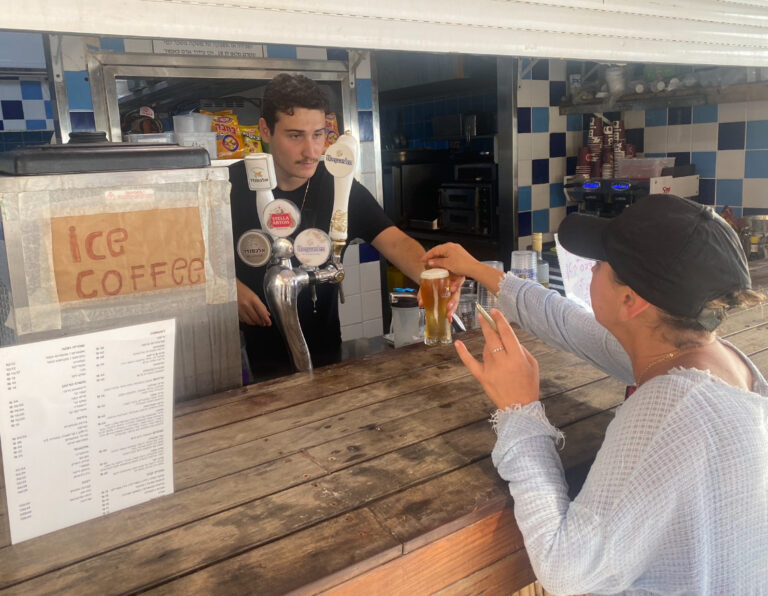JERUSALEM — Just as Israel’s tourism industry was recovering from the effects of COVID-19, thousands of workers in the industry are once again struggling to survive in the wake of the Oct. 7 attacks that sparked the Hama war.
According to the Israeli Ministry of Tourism, 15,000 tourists entered Israel on October 6, 2023; on October 8, 26. Since then, it has been a long, slow, devastating struggle for those who depend on tourism for their livelihood.
“We expected 2023 to be the best year in Israel’s history for tourism,” Peleg Lewi, a foreign affairs adviser to the Israeli Tourism Ministry, told The Sun. “We were on track to break the record of 4.5 million. We were recovering from COVID and tourists were not only religious, but also in large numbers from Europe, the Far East, China, Russia and Ukraine. On October 7, everything changed.”
Visiting Israel, it’s easy to forget that the country is at war. The beaches of Tel Aviv and Netanya, a few miles north, are laid-back and relaxed, with sunbathers basking under beautiful, cloudless skies. Men and women of all ages enjoy the Mediterranean surf, but tourist numbers are down from last year.
The war and the global attention it has drawn have made Israel less of a destination for those concerned about safety. Much of Israel’s economy continues largely uninterrupted, with locals living off business, finance, transportation, technology and manufacturing. Tel Aviv, a city of 4.4 million, remains a thriving metropolis. Markets, shops and restaurants are open. Weddings are ubiquitous.
But those whose livelihoods depend on tourists coming to Israel for vacations and holidays have endured miserable conditions for eight months.
“Tourism was booming, then COVID hit and we had no work for two years,” Ehud Orly, a tour guide in Jerusalem, told The Sun. “Then tourism came back. It was fantastic. We worked all the time. We were booked up for a year and a half in advance. Then October 7 came and since then there’s been very little work.”
Ilana Cohen, a tour operator who coordinates accommodation, transportation and activities for tourists, said that before October 7, her office was so busy that “there was no time to catch a breath. I was leaving the house at 6:30 in the morning, not getting home until 8 at night, and the phone was ringing off the hook. Then on the night of October 7, I got an email from the office saying, ‘Please do not come to work until further notice.’ We had a ton of cancellations. Cancellations are still happening.”
Lewis said the number of tourists entering Israel is now around 5,000 a day, about 30 percent of what it was before the Hamas attacks.
Most visitors to Israel since the attacks have been people seeking solidarity with faith-based groups; ordinary tourists with no religious or family ties remain very few and far between.
“We have faith-based tourist delegations, mostly from the Jewish community, missionaries mainly from the United States, and Catholic pilgrims from all over the world,” Louis said. “They will continue to come to Israel out of a sense of solidarity and because it’s really important to them.”
Before the war, tourism accounted for about 3% of Israel’s gross national product, and about 300,000 people were linked to or employed in the industry. Because of the war, travel agencies, tour coordinators and tour guides are struggling to find customers. Non-kosher restaurants in Jerusalem are also struggling to find customers, and the beaches are not as crowded as they used to be.
Mauricio von Eisenkatze works in a cafe-bar on Netanya’s beach during the summer. “When you see tourists, they are usually religious people,” he told The Sun as he waited for his next customer. “This year I’ve seen about four non-Jewish tourists, which is about 90 percent less than usual.”
The hotel industry has remained stable thanks to government subsidies to accommodate some 100,000 refugees from North and South Korea. Tour guides have been hit hardest.
According to the Israel Tourism and Statistics Authority, there are about 9,000 licensed tour guides in Israel. They were once in high demand, but since October 7, almost all of them have been unemployed.
Ron Lahad has been a tour guide for 14 years, teaching visitors about the history of Jerusalem and the Holy Land. “Imagine COVID was a dam holding back water, waiting for people who had postponed their trips to come,” Lahad told The Sun. “In early 2023 the dam broke and jobs flooded in. Some people were buying things or investing in businesses and making plans for the rest of 2023 and 2024. Then October 7 happened. Things went from 100 to zero.”
The Israeli Tourism Ministry is focused on 2025 and a possible return to normalcy. The mission now is to keep Israel in the eyes of those promoting tourist destinations. “We’re preparing for the day after,” says Louis. “We’re at all the international tourism fairs: Berlin, France, Madrid, Singapore, India. We tell people not to leave us out of the catalogs, because if we’re not in the catalogs and fairs for the big groups, we’re going to be forgotten.”
Visiting Israel in the middle of a war is still better: “If you want to support Israel, come here for a week,” Louis says. “Change your summer plans, come to Israel for a week, and show your solidarity.”
Lewis acknowledges that creative marketing alone may not be enough to revive Israel’s tourism industry. Threats from the north and the possibility of an escalating war could thwart progress. “If war escalates in the north, we’ll be faced with a new crisis,” Lewis said. “Unfortunately, tourism will be the last industry to return to normal. But we’re optimistic. There’s a saying: ‘If you want to be realistic in Israel, you have to be optimistic.'”

